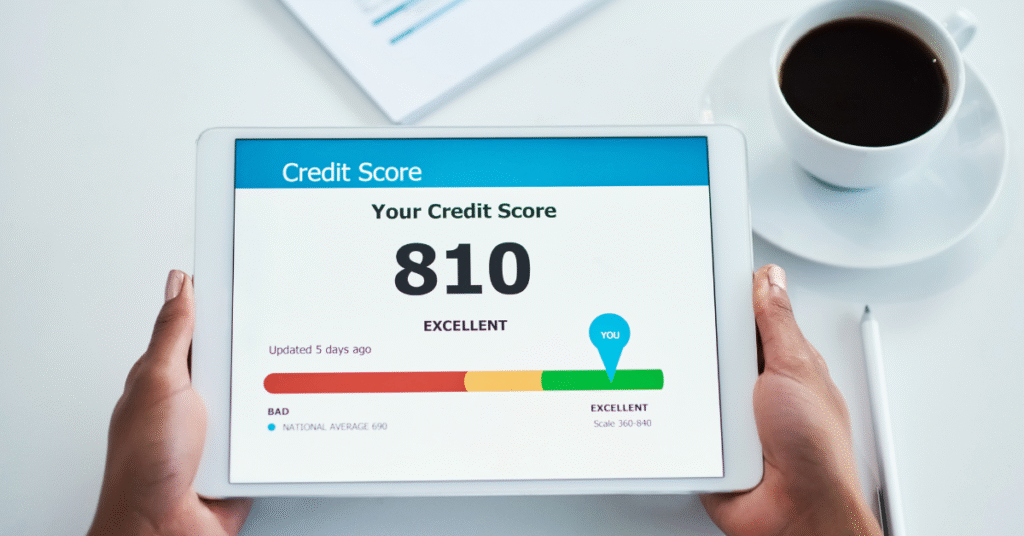12 New Years Financial Resolutions That’ll Actually Transform Your Money Game in 2026

How many times have you kicked off January with big money goals, only to find yourself back at square one by March? Yeah, me too.
But here’s the thing: 2026 doesn’t have to be another year of broken promises and wishful thinking when it comes to your finances.
I’m not going to sugarcoat it. Getting your financial life together takes work. But after years of watching my own bank account do the cha-cha (and not in a good way), I’ve learned that the right resolutions can genuinely change everything.
We’re talking about practical, doable goals that won’t make you feel like you’re living on instant noodles for twelve months straight.
So grab your coffee (or tea, I don’t judge), and let’s talk about the financial resolutions that’ll actually stick this time around. No fluff, no impossible standards, just real talk about real money moves.
Why Bother With Financial Resolutions Anyway?
Look, I get it. The whole “new year, new me” thing can feel a bit cliché. But when it comes to your money? Fresh starts actually matter.
Think about it this way: your finances are basically the foundation of everything else in your life. Want to travel more? Need money. Hoping to retire someday without eating cat food? Definitely need money. Planning to stop stressing every time your car makes that weird noise? You guessed it.
Financial resolutions give you a roadmap. Without one, you’re basically driving cross-country without GPS, hoping you’ll somehow end up in the right place. Spoiler alert: you probably won’t.
Whether you’re drowning in credit card debt, trying to save for a house, or just tired of living paycheck to paycheck, setting clear money goals creates direction. And direction? That’s what separates people who actually build wealth from people who just dream about it.
12 New Year’s Financial Resolutions To Make In 2026
Alright, let’s get into the good stuff. These aren’t your grandma’s boring financial tips (no offense to grandma). These are the resolutions that’ll actually move the needle on your financial situation.
1. Check Your Credit Report

When’s the last time you actually looked at your credit report? And no, glancing at your credit score on that banking app doesn’t count.
Your credit report is like your financial report card, except it actually matters in adult life. It shows everything: your payment history, current debts, credit inquiries, the works. And here’s the kicker: errors on credit reports are way more common than you’d think.
I’m talking about accounts you never opened, payments marked late when you paid on time, or debts that should’ve fallen off years ago. These mistakes can tank your credit score and cost you thousands in higher interest rates.
Make 2026 the year you actually monitor this stuff. Check your report at least once a month. It sounds excessive, but it’s also your best defense against identity theft and credit fraud. Someone could be out there opening credit cards in your name right now, and you’d have no clue until the damage is done.
The best part? You can pull your credit report for free anytime at annualcreditreport.com. No excuses, no fees, just straight-up access to your financial history.
Pro tip: set a monthly reminder on your phone. Same day every month, check that report. Make it as routine as scrolling through social media (but way more productive).
2. Pay Off High-Interest Debts
Let’s talk about the elephant in the room: that credit card debt that keeps growing no matter how much you pay.
High-interest debt is basically a financial vampire, sucking your money dry month after month. You make a payment, feel good about yourself for like five minutes, then realize most of it went to interest and barely touched the actual balance. It’s frustrating as heck.
Here’s what most people don’t realize: you have options beyond just making minimum payments forever. Debt consolidation can be a game-changer. By rolling multiple high-interest debts into one personal loan with a lower rate, you can actually see progress.
Think about it. If you’re paying 24% APR on a credit card but could refinance into a personal loan at 10%, that’s massive savings. We’re talking potentially thousands of dollars over the life of the loan.
Another move? Call your creditors and negotiate. I know, it sounds scary. But credit card companies would rather work with you than have you default completely. Many will lower your interest rate or set up a payment plan if you just ask. The worst they can say is no, and you’re no worse off than before.
The goal here isn’t perfection. It’s progress. Every dollar you save on interest is a dollar that can go toward actually eliminating the debt or building your savings.
3. Use A Cashback Credit Card
Okay, I know what you’re thinking: “Didn’t we just talk about credit card debt being bad?” Yes. But here’s the thing: credit cards themselves aren’t evil. It’s how you use them that matters.
If you’re responsible enough to pay off your balance in full every month (and that’s a big if), cashback credit cards are basically free money. You’re already buying groceries, gas, and random stuff on Amazon anyway. Why not get paid for it?
I’m a huge fan of cards like the Chase Freedom Unlimited, which gives you 1.5% back on everything. Or the Citi Double Cash Card, which offers 2% back (1% when you buy, 1% when you pay it off). Both have zero annual fees, which is exactly how it should be.
But here’s the catch, and it’s important: this only works if you have the discipline to pay that bill in full every single month. If you’re carrying a balance and paying interest, those cashback rewards mean absolutely nothing. You’re losing way more in interest than you’re gaining in rewards.
Think of it this way: would you pay $50 in interest to earn $20 in cashback? Of course not. That’d be ridiculous. But that’s exactly what happens when people use rewards cards irresponsibly.
Beyond cashback, many credit cards offer purchase protection, extended warranties, and travel insurance. These perks can save you serious money if you know how to use them.
4. Cancel Irrelevant Recurring Fees

Quick question: how many subscription services are you paying for right now? And I mean really paying for, not just vaguely aware they exist.
Subscriptions are sneaky little budget killers. Five bucks here, ten bucks there, and suddenly you’re dropping $150 a month on services you barely use. That streaming service you signed up for to watch one show? Still charging you three months later. That gym membership you haven’t used since February? Yep, still coming out of your account.
Companies love subscription models because they’re basically betting you’ll forget about them. And honestly? They’re usually right. We sign up with good intentions, use it for a week, then completely forget it exists until we’re doing our taxes and wondering where all our money went.
Make 2026 the year you actually audit this stuff. Go through your bank and credit card statements line by line. Circle every recurring charge. Then ask yourself: “Do I actually use this? Does it bring me value?”
Be ruthless. That meal kit service you thought would make you a better cook but just stressed you out? Gone. The premium music subscription when you mostly listen to free podcasts? Bye. The app you downloaded once and never opened again? Delete and cancel.
I did this exercise last year and found I was spending $87 a month on subscriptions I’d completely forgotten about. That’s over $1,000 a year! Imagine what you could do with an extra grand.
5. Take Advantage Of Employer Benefits
Here’s something wild: according to research, only about 38% of employees actually use all their employer benefits. That means most people are leaving free money on the table. Like, literally just ignoring money that’s available to them.
Your benefits package is part of your compensation. If you’re not using it, you’re basically working for less money than you’re actually earning. That’s just bad business.
Beyond the obvious stuff like health insurance and 401(k) matching (which we’ll get to), many employers offer benefits most people don’t even know exist. Financial counseling services, for example. Some companies will literally pay for you to sit down with a financial advisor who can help you plan your financial future.
Student loan assistance programs are becoming more common too. Your employer might offer to help pay down your student loans, but you’d never know unless you actually read through your benefits package.
Then there’s the wellness stipends, professional development budgets, and FSA/HSA accounts that can save you thousands in taxes. These aren’t just nice-to-haves. They’re strategic financial tools that can accelerate your wealth-building.
Here’s your homework: schedule 30 minutes this week to actually read through your employee handbook or benefits portal. I know it’s boring. Do it anyway. You might discover you’ve been eligible for benefits you never claimed.
And if your employer offers 401(k) matching? Use it. That’s free money. If you’re not contributing enough to get the full match, you’re literally refusing a raise. Don’t be that person.
6. Examine Your Insurance Coverage
Insurance is one of those things we all know we need but nobody wants to think about. It’s boring, it’s confusing, and honestly, it kind of feels like throwing money into a black hole.
But here’s the reality: being underinsured can absolutely wreck your financial life. One major accident, one house fire, one serious illness, and suddenly you’re facing bankruptcy because you wanted to save $50 a month on premiums.
The stats are pretty scary. As of 2024, about 22% of homes are underinsured. That means if disaster strikes, these homeowners won’t have enough coverage to actually rebuild or replace what they lost. They’ll be stuck with massive out-of-pocket expenses that could wipe out years of savings.
Make 2026 the year you actually review your coverage. Not just auto and home insurance, but life insurance, disability insurance, and umbrella policies too. Your needs change over time. That policy you bought five years ago might not cut it anymore.
Got married? Had kids? Bought a house? Started a business? All of these life changes should trigger an insurance review. Your coverage needs to evolve with your life.
Talk to an insurance broker (not just an agent for one company). Brokers work with multiple insurers and can help you compare options without bias. They can spot gaps in your coverage and often find ways to save you money by bundling policies or adjusting deductibles.
Yeah, it’s not the most exciting way to spend an afternoon. But neither is explaining to your family why you can’t afford to rebuild after a fire because you were underinsured. :/
7. Aim To Live Below Your Means
This one’s going to sting a little, but it’s also the most important resolution on this entire list: stop spending every penny you make.
Living below your means doesn’t mean being cheap or depriving yourself of everything fun. It means being intentional about your spending and making sure your lifestyle doesn’t inflate every time you get a raise.
I’ve seen it happen so many times. Someone gets a promotion and a nice pay bump, and within three months, their expenses have magically grown to match their new income. Bigger apartment, nicer car, fancier restaurants. And suddenly, despite making more money, they’re still living paycheck to paycheck.
The secret to building wealth isn’t just earning more. It’s keeping your expenses in check while your income grows. That gap between what you earn and what you spend? That’s where financial freedom lives.
Start with a budget. I know, I know. Budgeting sounds about as fun as watching paint dry. But it’s literally just a plan for your money. You’re already spending it anyway. Might as well have a strategy.
Track your essential expenses: housing, utilities, food, transportation, healthcare, debt payments. These are non-negotiables. Then look at everything else. That’s where you have flexibility and control.
The goal isn’t to cut out everything you enjoy. It’s to make conscious choices. Maybe you love dining out but don’t really care about having the newest phone. Cool. Spend on restaurants, keep your phone an extra year. Find what matters to you and cut ruthlessly on the stuff that doesn’t.
Living below your means creates breathing room. It means you’re not stressed every time an unexpected expense pops up. It means you can actually save and invest. It means you’re building wealth instead of just surviving.
8. Maximize Your Retirement Account Contributions

Let’s talk about future you for a second. You know, the person who’s going to be 65 someday and hopefully not working at Walmart as a greeter because they can’t afford to retire.
Retirement accounts like 401(k)s and IRAs are some of the most powerful wealth-building tools available. The tax advantages alone are huge. But most people aren’t maxing them out, which means they’re leaving potential wealth on the table.
For 2025, the contribution limits have increased. For 401(k)s, you can contribute up to $23,000 if you’re under 50, and $30,500 if you’re over 50. IRAs allow up to $7,000 (or $8,000 if you’re 50+). These aren’t just random numbers. They’re opportunities.
Here’s what blows my mind: the average person will work for about 40 years but needs their retirement savings to last 20-30 years. That’s a lot of years without a paycheck. Social Security isn’t going to cut it (if it even exists in its current form by the time we retire).
The earlier you start maxing out these contributions, the more time compound interest has to work its magic. We’re talking about potentially hundreds of thousands of dollars in difference over your lifetime.
Can’t max out your contributions right now? That’s okay. Start where you can and increase your contribution rate by 1% every year. You’ll barely notice the difference in your paycheck, but your future self will thank you.
And please, for the love of all that is financially holy, at least contribute enough to get your full employer match. That’s literally free money. Refusing it is like turning down a raise because you don’t feel like filling out a form.
9. Increase Your Emergency Fund

Pop quiz: if your car broke down tomorrow and needed a $1,000 repair, could you cover it without going into debt?
If you answered no, you’re not alone. Studies show that a huge percentage of Americans can’t cover a $1,000 emergency without using credit cards or loans. That’s terrifying when you think about it.
An emergency fund is your financial safety net. It’s what keeps a bad situation from becoming a complete disaster. Without one, every unexpected expense becomes a crisis that pushes you deeper into debt.
Start with a goal of $1,000. That’s your bare minimum, your first milestone. It won’t cover everything, but it’ll handle most small emergencies without derailing your entire financial life.
From there, work toward three to six months of expenses. This is your full emergency fund, the amount that’ll actually protect you if you lose your job or face a major medical issue.
I know that sounds like a lot. It is a lot. But you don’t have to save it all at once. Set up automatic transfers from your checking to a separate savings account. Even $25 a week adds up to $1,300 in a year.
The key word there is “separate.” Your emergency fund can’t live in your regular checking account. If it’s too easy to access, you’ll spend it on non-emergencies. Trust me on this one.
Open a high-yield savings account specifically for your emergency fund. Somewhere like Marcus by Goldman Sachs or Ally Bank that offers decent interest rates. Your money should at least earn something while it sits there waiting for emergencies.
And here’s the thing about emergency funds: just having one reduces stress. You sleep better knowing that if something goes wrong, you’re covered. That peace of mind? Totally worth the sacrifice it takes to build it.
10. Take Control Of Interest Rates
Let’s be honest: the Federal Reserve has been playing ping-pong with interest rates, and it’s been rough on everyone carrying debt. But here’s what most people don’t realize: you don’t have to just sit there and take whatever rate your credit card company throws at you.
If you’ve got decent credit, you have leverage. You can shop around for better rates, negotiate with your current lenders, or refinance into lower-rate products. The key is actually doing it instead of just accepting the status quo.
Balance transfer credit cards can be incredibly useful if you use them right. Many offer 0% APR for 12-18 months. If you transfer a high-interest balance and pay it off during that promotional period, you’re saving potentially thousands in interest.
Just watch out for the balance transfer fee (usually 3-5% of the amount transferred) and make sure you can realistically pay off the balance before the promotional rate expires. Otherwise, you’re just kicking the can down the road.
Personal loans are another option for consolidating high-interest debt. If you’re paying 20%+ on credit cards but can get a personal loan at 8-12%, that’s a significant improvement. Your monthly payment might actually go toward the principal instead of just feeding the interest monster.
And here’s a wild stat: according to LendingTree, 76% of people who asked their credit card company for a lower rate actually got one. The average reduction? About 6 percentage points. That’s huge!
Most people never ask because they assume the answer will be no. But credit card companies would rather keep you as a customer at a lower rate than lose you entirely. A quick phone call could literally save you hundreds or thousands of dollars.
11. Increase Your Income

Okay, controversial opinion incoming: sometimes the problem isn’t your spending. Sometimes you just need to make more money.
You can only cut expenses so far. There’s a floor to how little you can spend and still, you know, survive. But income? Income has no ceiling. You can always find ways to earn more.
Side hustles are the obvious answer. Freelancing, consulting, driving for rideshare apps, selling stuff online. The gig economy has made it easier than ever to earn extra money outside your main job.
But don’t sleep on the power of increasing your primary income either. When’s the last time you asked for a raise? Negotiated your salary? Updated your resume and tested the job market?
Too many people stay in jobs that underpay them because it’s comfortable or they’re afraid of change. Meanwhile, they’re leaving thousands of dollars on the table every year.
Invest in your skills. Take courses, get certifications, learn new technologies. The more valuable you are to employers, the more you can command in salary. This isn’t just about earning more now. It’s about increasing your lifetime earning potential.
Network like your financial future depends on it, because honestly, it does. Most good opportunities come through connections, not job boards. Go to industry events, join professional organizations, stay active on LinkedIn.
And here’s something people don’t talk about enough: make sure your work aligns with your values. You spend a huge chunk of your life working. If you’re miserable doing it, no amount of money is worth it. Find ways to earn that don’t drain your soul in the process.
12. Handle Your Housing Expenses
Housing is typically the biggest expense in most people’s budgets. It’s also where many people overspend without realizing it.
The general rule is to keep housing costs under 30% of your take-home pay. Notice I said take-home, not gross. If you’re spending 40-50% of your income on housing, you’re leaving yourself vulnerable and making it nearly impossible to save.
If you rent, that 30% includes rent and utilities. If you own, it includes your mortgage, property taxes, insurance, HOA fees, and maintenance. All of it counts.
Look for ways to reduce these costs. Shop around for cheaper home or renters insurance. Implement energy-saving measures to cut utility bills. Consider a roommate if you’ve got extra space. Every dollar you save on housing is a dollar you can put toward debt, savings, or investments.
Thinking about buying a house in 2026? Pump the brakes and make sure you’re actually ready. The real estate market has been absolutely bonkers the past few years, and nobody can predict where it’s headed.
Before you even start looking at houses, make sure you’ve got your financial ducks in a row. That means a credit score of at least 700, a down payment of at least 5% (though 20% is better to avoid PMI), and an emergency fund that can cover at least three months of expenses.
If you can’t check those boxes, renting isn’t failure. It’s being smart and patient. There’s no shame in waiting until you’re truly ready to buy. Better to rent for a few more years than to buy a house you can’t actually afford and end up foreclosed and financially destroyed.
And if you’re already a homeowner, regularly review your mortgage rate. Refinancing when rates drop can save you tens of thousands over the life of your loan. It’s not always worth it (closing costs matter), but it’s always worth checking.
Making These Resolutions Actually Stick
Here’s the brutal truth: most New Year’s resolutions fail by February. Financial resolutions are no exception. Good intentions mean nothing without execution.
So how do you actually stick with these goals? Start by making them specific and measurable. “Save more money” is vague and useless. “Save $200 every month in my emergency fund” is concrete and trackable.
Break big goals into smaller milestones. Paying off $10,000 in debt feels impossible. Paying off $833 this month feels doable. Same goal, different framing.
Automate everything you can. Automatic transfers to savings, automatic bill payments, automatic retirement contributions. Remove the need for willpower and discipline by making good financial choices the default.
Track your progress. Use apps like Mint, YNAB (You Need A Budget), or Personal Capital to monitor your spending, saving, and net worth. Seeing progress is motivating. It keeps you going when things get tough.
Find an accountability partner. Tell someone about your goals. Check in with them regularly. It’s harder to give up when someone else knows what you’re working toward.
And be kind to yourself when you mess up, because you will mess up. Everyone does. One bad month doesn’t erase all your progress. Don’t let a temporary setback become a permanent failure. Just reset and keep going.
Final Thoughts
Look, I’m not going to lie to you and say getting your finances together is easy. It’s not. It requires discipline, sacrifice, and a willingness to delay gratification. Sometimes it straight-up sucks.
But you know what sucks more? Living paycheck to paycheck forever. Never being able to retire. Drowning in debt. Stressing about money constantly. That’s the alternative if you don’t take control now.
These twelve resolutions aren’t magic. They won’t make you a millionaire overnight. But consistently applied over time? They’ll absolutely transform your financial life.
You don’t have to be perfect. You don’t have to tackle all twelve at once. Pick two or three that resonate most with your current situation and start there. Build momentum. Add more as you go.
The best time to start was ten years ago. The second best time is right now, today, in 2026. Your future self is counting on the decisions you make today.
So what’s it going to be? Another year of financial stress and broken promises? Or the year you finally took control and built the financial foundation you deserve?
The choice is yours. Make it count.








